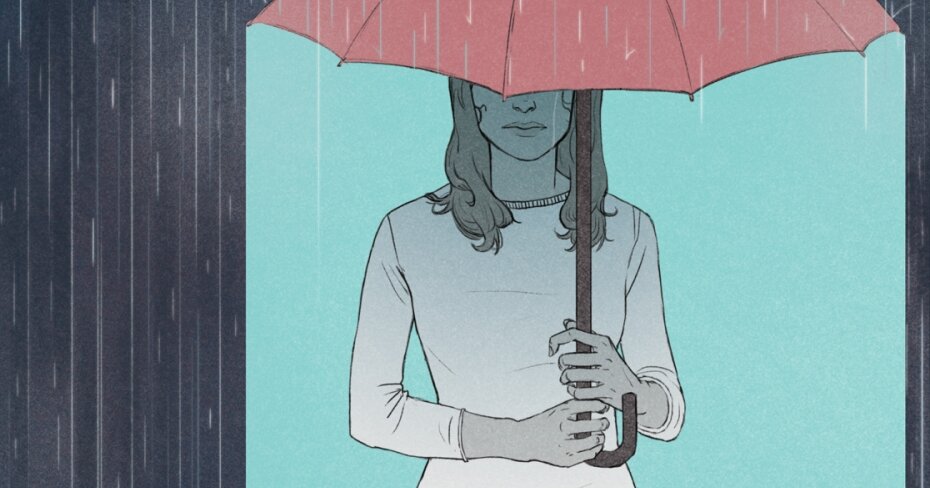How a sudden divorce shook my world (and my finances)
By: Jennifer Juneau on February 3, 2017
“As of right now, we’re no longer married.”
Those were the words I heard from my then-husband when he picked me up at the Ottawa International Airport after returning from a holiday with one of my girlfriends.
It was Valentine’s Day, 2015.
The moment
He sat me down and said, “You haven’t been yourself lately and I can’t live with you anymore. I took your house key, you no longer have a credit card, and I closed our joint accounts. Your car is in the garage with some clothes and $500 — you can stay at a friend’s house, or a hotel, but you’re not coming home. You can see the kids tomorrow and we’re meeting with a mediator next week to start the divorce process.”
Shock doesn’t even come close to describing what I felt.
I nearly fainted as I watched him walk to the parking garage and get in his car. I knew our marriage was in trouble, but in my wildest dreams I never expected this. My entire world unraveled right there at the arrivals gate.
I was 44-years old and had a stable career as a nurse. Now everything was about to change.
The fallout
The biggest impact was obviously emotional, but people tend to overlook how a life-altering event like a divorce can wreak havoc on your finances.
In my case, the financial fallout was huge.
Looking back, I don’t remember much about the days that followed, but I somehow managed to navigate some big money changes amidst the chaos. To begin, my ex-husband was also my financial advisor — so he had access to all of my accounts. Before I had the chance to fire him, he split one of our joint accounts and deposited half ($5,663) into my personal savings account. After explaining that I needed half of our other joint account, he agreed to cut me a cheque. That brought my new net savings to $13,539.
He sat me down and said: You haven’t been yourself lately and I can’t live with you anymore
I also applied for a new VISA and opened a new bank account, which, looking back, were big steps on the road to forging an independent financial identity.
A few weeks after the airport split, we decided to cash in our life insurance policy, giving me an additional $2,419. My ex-husband also agreed to pay me $1,000 per month. Because we hadn’t officially settled yet, this amount was somewhat arbitrary, but it did cover rent for the small apartment I found ($600 per month), with the rest going towards child support and legal fees.
Lastly, we agreed that my husband would buy my share of our home, but this wouldn’t happen until the divorce was settled months later.
This brought my net savings to $15,958 and my income to $1,000 per month.
The advice
The first chance I got, I fired my ex-husband and found a financial advisor I could trust. The importance of having sound money advice, especially when going through uncertain times, cannot be overstated.
Unlike my savings assets, my investments were secure and — mostly — mine alone.
Although I wasn’t able to keep contributing to my RRSP after the split, my balance continued to grow. I took my new planner’s advice to not touch my retirement savings.
Luckily, my portfolio yielded some pleasant surprises. I had purchased 10 Apple shares back when they were low (in 2007) and, because they’d always performed well — jumping with virtually every new product release — I’d purchased an additional sixty shares over the years. These stocks represented a sizeable chunk of my RRSP.
The first chance I got, I fired my ex-husband and found a financial advisor I could trust
By the end of October 2015, before the divorce was settled, my RRSP — which I’d been contributing to since 1999 — was worth $135,098. My TFSA, on the other hand, had grown to $15,810. Unfortunately, I only had rights to half of my TFSA, and therefore walked away with $7,905.
Letting my long-term assets grow — despite not being able to keep contributing — was one of the best pieces of advice I received during the tumultuous last two years.
This brought my retirement savings to $143,003.
The rebuild
After five months, I felt ready to start working more regularly. Since the split, I could only handle working one day a week in a high pressure healthcare environment. And that only brought in $1,200 per month.
I needed to earn more.
I picked up 16 hours per week at a nearby gym, earning minimum wage, and began freelance writing — a newfound passion of mine — which brought in roughly $150 per month.
On top of this, my ex-husband’s salary increased, which meant when we finally settled in October 2015, he was legally required to pay $608 per month in child support; this increased to $713 per month the following year, based on our Notice of Assessments. Although this was down from the $1,000 per month he initially agreed to pay, it also included a locked-in lump sum spousal support payment of $90,000, which I can only access when I retire.
In addition to what I was bringing in, my financial advisor helped me find ways I could reduce costs until the settlement was finalized. I saved where I could: shopping at discount grocery stores, not buying new clothes, and not eating out. I even stopped using my debit card to avoid monthly fees. But some expenses I viewed as necessary investments in myself. For instance, I kept my gym membership as a way to stay active and emotionally stable during those first few months.
This brought my monthly income to $2,703 — enough to cover the bulk of my living expenses and legal fees without dipping into savings.
The settlement
We finally settled in October, 2015, eight months after that fateful day at the airport.
I owned my car and my ex-husband bought my share of the house; after the legal fees and expenses, I received a payment of $108,933.
Once our pension plans were divided, I received a locked-up amount of $67,912. And, as mentioned above, a lump sum spousal payment of $90,000. Therefore, with the liquid money from my share of the house, my savings jumped to $116,912. And including the pension and lump sum payments, my investments went from approximately $140,000 to $298,010.
I moved into a more expensive but much nicer (and still relatively affordable) rental apartment in Aylmer, Que., across the river from Ottawa. Rent was $1,000 per month, inclusive.
I kept my gym membership as a way to stay active and emotionally stable during those first few months
My situation was starting to look up. Because the cost of living in Quebec is roughly half of Ontario, and because my kids go to school in Quebec, our new living arrangement was a win-win for myself and my boys, with whom my ex-husband and I now share joint custody.
Lastly, following the settlement, I created a new living will for myself and my kids. Now if anything happens, my financial wishes reflect our current situation, not our old one.
Fast forward to 2017: I’ve opened an emergency savings account, I’ve started two new TFSAs, each now worth around $25,000, and my total investments have climbed to around $380,000.
The upside
Nearly two years post-breakup, and I finally feel able to take care of myself and my kids — both financially and emotionally.
With the money I received, I took a once-in-a-lifetime trip to India, where I met a community of bloggers who’d noticed my writing from the other side of the world, and who have grown into a personal support network for me. It’s largely thanks to their ongoing encouragement that I pursued my writing dream.
Nearly two years post-breakup, and I finally feel able to take care of myself and my kids — both financially and emotionally
And writing is what’s helped me more than anything through this tumultuous period. Penning my experiences has proved cathartic. This March, my first book, chronicling all my experiences will be released. My hope is that it will help others navigate their own turbulent life chapters.
Looking back, I can hardly recognize that stunned and fearful woman at the airport.
Jennifer (Green) Juneau is the author of “Winning While Losing: The Upside of Heartbreak”, which will be published by Friesen Press in March 2017. You can read her blog here.
Illustration by Taryn Gee


